|
Our trip in the Amazonian jungle in Brazil (June 2012) started at Manaus, the capital city of the state of Amazonas. Our hotel, Tropical Hotel was on the shores of Rio Negro. Next stop was Ariau Towers on Rio Negro. The only way to reach Ariau Towers is by boat, they have two regular boat trips a day to Manaus (well, their stop in Manaus is Tropical Hotel). We could enjoy walking into the forest on the 8 Km (5 miles) catwalk. The catwalk had railings and is above the water level all time; our trip was at the beginning of dry season when the water level is the highest; the water was two meters under the catwalk, and all around us was the flooded forest. Water level fluctuation around the year could be in the range of 4 to 15 meters. There are two houses along the walk, pretty expensive to rent, Sylvester Stallone resided in it (as we were told) when he visited Ariau. At the Ariau Towers restaurant the visitors had to be aware of those monkeys that are specialized thieves. I witnessed a day when 3 ladies enjoyed the lunch outside on the patio. The monkey jumped on the table and pushed down a plate full with food in less then one second; then with no shame started to eat the food spread all over the floor. In another instance a tourist had a piece of bread in his pants’ pocket, and the monkey jumped to a level where it could sneak a hand in the pocket and took the bread and run; it was so fast that the American tourist looked around and did not understand how his piece of bread disappeared. Our local guide insisted we should wake-up one day before sunrise and with a powerboat we navigated into the forest to witness how nature starts the day. It was a morning to remember forever. One night we wandered in the forest with a power boat and we had with us a 19 years old local guy. At a certain point he jumped into the water and after a 10-20 seconds fight under the water (seemed an eternity for me) he brought on the boat a baby caiman. Then we had a four days cruise up on Rio Negro. There are no mosquitoes around, the natural acidity of the water prevents mosquito larvae from developing. We were told this is because the leaves and tree-branches that putrefy of high humidity and flooding of the forest. On one of the stops we travelled inside the forest and a venous snake (fer-de-lance) passed by few centimeters away from my wife’s foot, luckily, she stepped in the right direction. The guide caught the snake, showed it to us, then released it into the forest. On another occasion, cruising with a boat into the flooded forest the guide promised he will show us a big snake. Well, we saw something in the distance, but very unclear; not a problem for our guide. A local guy, having his house on the water, had as pets an anaconda and a python. Anaconda was out of reach since it was nervous, changing skin, so we had the python on the boat. My wife definitely enjoyed touching it. Millions of years ago it was the ocean that ruled the place that is today the Amazon basin. But the tectonic activity formed the Andes and the two oceans split, trapping the water inside the new continent; in so many years the waters are salty no more, and the ocean animals had to adapt to the new reality; today we have freshwater dolphins in the Amazon, also known as the pink river dolphin or boto. In our trip we saw snakes, monkeys (two different species), a slot and a big variety of birds, but I was more focused to watch them then catching them on camera. Besides, the animals were very active, they did not stay for long in our sight.
1 Comment
We landed in Lima, Peru in one day in May 2010 and right away we flew to Cusco. But we did not stop in town, and had a bus to Ollantaytambo, a touristic village, where we stayed 3 days at Pakarytampu hotel. We employed for two days a tourist agency run by a local guy; he had a one room office in the central plaza of the village. First day we had a rafting down Urubamba river, that flows all the way from Titicaca lake to Amazon river. We shared the boat with another couple. It was a challenging ride with one, two, even class three rapids. When I was a kid I did a lot of horseback riding in my grandmother village, but my wife never tried it. But thumb up for her, it was no problem when we had a full day of horseback riding with our Peruvian guide. The final destination was a fall at 3800 meters (12,460 ft) altitude. The last segment we had to do it on foot, we left the horses behind in a meadow, tied by a tree. The trail was adventurous; not more that 3 meters (10 ft) wide, it had the mountain on one side, steep like a wall, and an abyss on the other. At one point the trail narrowed to at about 0.5 m (2 ft) because the rain washed it. We crossed that distance tied with ropes, but we made it, twice. From Ollantaytambo we took the train to Machu Picchu city. The train stops in different spots where from the tourists could have a 5, 4, 3,2 or 1-day trip to the mysterious Machu Picchu. We had the one-day trip. Machu Picchu is one of the wonders of the word. From Wikipedia: “Most archaeologists believe that Machu Picchu was constructed as an estate for the Inca emperor Pachacuti (1438–1472).” Next stop for us was Puno, the city on the shores of Lake Titicaca. The lake is the "highest navigable lake" in the world, with a surface elevation of 3,812 meters (12,507 ft). It is 190 km long with a total surface of 8372 square km. It has 41 islands and 120 self-fashioned floating islands where Uru indigenous people live. We had a one-day trip on the lake with a boat with a capacity of 40 passengers. Some Uru families accept visitors, and we were happy to learn their traditions. A 15 years old girl offered to drive us on her little boat ($20 cost) to the next island. She took her 4 years old sister on the boat, and the little cutie sang all the way between the two islands. Since the lake itself is at an altitude higher then 3800 meters, some islands had hills with peaks at over 4000 meters. The politics, as always, is tricky, both Peru and Bolivia claim they own 60% of the lake.
My wife and I crossed the strait of Gibraltar from Spain to Morocco, city of Tangier, in a ferry, one day in 2003. And that was a lot of what happened that day. It was a guided tour; our Moroccan guide was waiting for us at the port. We were about 20 people. We were advised that locals will try aggressively to sell their stuff, and if you want to buy, you should negotiate. The guide said that buying without negotiating might be considered offensive (sic!). And here is my first story. On a narrow and crowded street someone tried to sell me a very small drum, kind of a toy, because… I made the mistake to look into his eyes and he hooked me. He said in English “ten dollars for this”. I did not want to buy it, but still I said, “this cannot be more then one dollar”. He said ”five”. I wanted to leave and turning away to move on I said “I will not pay more then two dollars for that.” The guy sealed the deal “Done!”. What could I say? I searched my pockets and found a five dollars bill and handed it to the guy. He gave me the drum and looked for change. But we were blocking the street and the crowd pushed me away. Well, I paid five for the useless drum, I thought. But I had a big surprise 50 meters down the street. A local guy, not the one that sold me the drum, tapped my shoulder and when I returned to face him, he gave me 3 dollars, “here is your change”. It appeared all those Moroccans selling souvenirs were in full control of the street. In the picture are all we bought that day, and everyone has a story, but I will not go into more details… Later, we were near a plaza and out of nowhere a guy put a snake on my shoulders. My wife got it on camera. Of course the snake owner asked money for that, five dollars. I did not negotiate and payed, I wanted to depart as quickly as possible. Only 20 meters away a camel owner asked 10 dollars to let me climb on his animal and take a picture. Since I was there, why not? I tried that experience too; I was busy with the operation and did not notice when another guy put a red cap on my head. When I was down on earth again, he said, “Now the cap is yours, 10 dollars.” The reader can imagine that I wanted quickly out of that plaza and I paid. One more little story before I go. Walking those narrow and spaghetti-like streets you may lose the group, even more so when you have a wife interested in staying a little bit more in the shops. But that was no problem. An unknown guy, always the same, saved us every time “your group is on that street” and he stretched his hand in a certain direction, “then take the second on the right.” When we were back to the ferry that fellow was around and I saw some other tourists in the group tipping him. I contributed with two dollars as well. The tour included a dinner in a restaurant, music and local chicken dishes. I was wondering if they bought the chicken from the street we walked only few minutes ago.
Well, it was a nice trip. Our 2008 tour in Middle East included Egypt. We were a group of two, my wife and me. We crossed the border from Eilat (Israel) to Taba (Egypt). A taxi brought us to the border and left. After two hours wait, a guide from Egypt, from the travel agency we pre-paid, showed up to pick us. We had no means to contact the agency, we were at the mercy of the agreement we did on internet. It was already late evening, and we had to reach Cairo next day. It was an overnight trip in a minivan, 600 km crossing the desert. Passengers, except my wife and I, were the driver, a guide (not ours as we found out) and a surprise, a police officer. When we enquired the reason he is with us, the police officer (dressed all in black) told us that he is there to protect us… and pulled out from under his coat a semi-automatic machine-gun to show he is serious about that; he could speak broken English. About a week ago there was a kidnaping in Egypt, and the police department in Taba wanted to take no risk, or the police officer wanted a free ride to Cairo; no problem, it was a minivan for 16 persons and only five of us, including everyone. It was a magnificent night and the desert looked very special under a bright moon. In Cairo we walked the streets, visited bazaars and mosques. I remember one event in a mosque packed with tourists, mostly a very large American group. Our guide wanted to show us how good sonority the mosque has, and a prayer could be done without microphones. He started a Muslim prayer with a very strong voice. He had a nice voice and his prayer resonated loudly, indeed like from a microphone. The whole crowd inside froze, total silence, except, of course, our guide’s prayer, that lasted not more than 10 sec. An American tourist came by and told our guide: “You definitely know how to silence a crowd.” My feeling was that he was a little bit scared and wanted to be sure it is nothing else but a demo. I laughed and patted him on the shoulder, that was the assurance he expected. We visited the pyramids, and our Guide showed his skills, asked us for ten dollars bill he spent to gain access in a pyramid under revision, with two tombs inside. After we were out, he said: “I liked that you did not touch anything. There are tourists around here, mostly Russians, that scratch the walls to take home souvenirs.” He was not the only guide that did not like the Russian tourists. Our guide in Sinai Peninsula told us that if you go in the desert and turn a stone, you will find a Russian tourist. In Sinai Peninsula we visited the Moses mountain, that is the place where Moses got the ten Commandments from God. We followed the tradition of the place and started the journey at 2 AM to catch the sunrise from the top of the mountain. By the way, there is no place saying here on this spot God gave the 10 Commandments to Moses, or something like that. The rule is that any group should have an accompanying Bedouin from the local tribe to go up on Moses mountain, our guide was not allowed to come with us. So, we had Mohammad, the Bedouin, coming with us. I did not expect to be so cold, and Mohammad offered me his coat. At the base of the mountain is the famous St Catharine monastery, Christian Orthodox faith. It was never attacked by the Muslims since inside the walls it is a mosque as well. That mosque never had a prayer inside, but it served its purpose saving the monastery from attack. Some bones of Saint Catherine are in a room inside the church where only Christian Orthodox are allowed, and you need to have a proof of some sort, you cannot fool the monks. We have dual citizenship and my wife used her Romanian passport as a proof, Romanians are considered Orthodox in that church, so, she saw the bones. And within the walls of the monastery it is the burning bush, where Moses met God. From Wikipedia: “ According to the narrative, the bush was on fire, but was not consumed by the flames, hence the name. In the biblical narrative, the burning bush is the location at which Moses was appointed by Adonai (God) to lead the Israelites out of Egypt and into Canaan.”
Jerusalem should be on the list of every tourist that respect vacationing around the world. We visited the city in 2008. History is on many levels, hundreds and thousands of years of traces of different civilizations that lived those places. And, of course the city breathes religion, it is the heart of all three monotheist faiths… the most important place for Judaism and Christianity and one of the most important for Islam. The feeling you are in the middle of it… is special. And the city itself is unique; there is a law on the Jewish side of Jerusalem that states that all houses must be made of white stones, so that Jerusalem is so different. In the picture is the most famous cemetery in the world, those buried there will be the first to go to heaven when the Final Judgement will come (so they say). But there were drawbacks. We paid for a guided tour. It included the road of the cross, and my feeling was that the guide was not very interested in the story, he was bored, besides the place looked like a tourist trap attraction rather then something Holly. Also the Church of the Holy Sepulchre, hosting the two most holy places in Christianity, seemed too commercial for me. I could feel the tension among inhabitants of different groups. The holiest place for Judaism is the ruins of the Solomon Temple, only the west wall still standing. And that temple must have been huge before the Romans destroyed it. Just in the middle of that temple it is the Mosque of Al Aqsa, the third holiest place for Islam. The Jewish people would like to rebuild the temple, that implies the destruction of the Mosque, or maybe moving it, and that is unacceptable for the Islam world. There are articles suggesting that this situation can generate a devastating war. I have a little story to tell when I visited the west wall of the Solomon Temple. Men on one side, women on the other, the checking to get closer to the wall was like the checking to board a plane. OK, I was in. A rabbi approached and said in English “Do you want to have a good life on Earth?” I could say nothing else but “Of course.” The rabbi stretched his right hand toward me, palm up “Twenty dollars.” I checked my pockets and found a $20 bill and placed in the rabbi’s hand. Pleased, the rabbi said: ”Come with me.” I followed him through a corridor until we reached a library. Outside the library, on a table, a huge book, I assumed it was the Torah, was opened somewhere in the middle. “Put your hand on the page of the right,” ordered the rabbi. I obeyed. He put his right hand over mine, and with the left hand he followed some lines on the page on the left reading in Yiddish (I assume) for about 30 sec. When he finished he released my hand, ”From now on you will have a nice life on Earth” and he directed me back to the court outside. Did it worth the twenty dollars? I say YES, most of my friends hearing the story liked it, some made funny remarks, but surprisingly, very few said it was a waste of money. The tour included a visit to Holocaust museum. The Holocaust is a tragedy that should be remembered for ever; I remembered seeing movies or reading books about one-two individual tragedies, and that took away my sleep for the night, and multiply this by millions… it was a catastrophe that words can hardly describe; still I did not want to see the museum, I was not in the mood, but I could not go around it. So, I visited it. There were pictures, videos and explicative panels about the Jewish people sufferings across Europe during WWII. But I saw a historical mistake inside. On one of the panel it was stated that because the Romanians sided with the Nazis Germany they got half of Transylvania as reward. Well, that was false, Transylvania belonged to Romania since the first World War, and lost half of it during the Second War for Hungary benefit, that also joined Germany. That division of Transylvania lasted only as long as the war, but how many tourists really cares who benefited from the Transylvania split during WWII, Hungary or Romania? But history should be recorded as it was. Maybe the mistake on the panel was corrected, my visit was in 2008.
With all the problems the city has because of ethnic tensions, still, I think it is a must go tourist destination. We started our journey in Tel Aviv. We stayed in a hotel close to the Mediterranean Sea, nice beach, quiet, clean water. And just nearby, walking distance along the beach was Jaffa, a tourist attraction as well. Known as an ancient port city in Israel, Jaffa is also famous for its association with the biblical stories of Jonah, Solomon and Saint Peter as well as the mythological story of Andromeda and Perseus. Next was Eilat, a nice surprise. High class hotels and the receptionist was kind to keep our language for few days when we visited Egypt, and upon our return we were given the same room, with a nice view to the Red Sea. In Eilat we enjoyed the coral Recife accessible right from the beach. It costed us $20 to enter that area of the beach, but after that, snorkeling was easy to do and stunning. The landscape is like from another planet (at least for us). Jordan is very close, just across the Gulf of Aqaba. Then it was Jerusalem, but there were so many things happening in Jerusalem that is no room in this blog, our visit to Jerusalem will be a different blog, tomorrow. After Jerusalem we returned to Tel Aviv and had some sunny days enjoying the beach and the Mediterranean waters. One unpleasant thing that I remember (should I say it?) is that on our way from the beach to the hotel we had to cross a walk-way where many locals were promenading their dogs, and smelled dog urine.
Our last day in Tel Aviv, that was our last in Israel as well, was in a very special Holy Day, Rosh HaShana, when nobody works until evening comes, no flights, no check-ins or check-outs from the hotel. So, we enjoyed that half day for free, and we had free snacks in the hotel’s cafeteria the whole day (dry fruits, biscuits, coffee and tea), they did not bother to collect what was left after the breakfast. I do not know where all other guests disappeared, but that was OK for us… Petra is a city along a gorge, the dwellings are actually caves; Petra in Latin means rock. It has a fascinating history. Wikipedia explains it well https://en.wikipedia.org/wiki/Petra There is a plaza somewhere in the middle of the gorge, where I could buy batteries for my camera!! …Otherwise you would not see my pictures. The Romans used the city to collect taxes from caravans passing through the gorge, and they had official buildings… well, still a cave, but Roman-like façade. At the end of the gorge there is an amphitheatre built by the Romans. We missed by few days a show here, a tribute to Pavarotti. Note: there are still some people living around, but if you want to take a picture of a passing lady, you need to pay, and I had only a credit card with me; do not do that mistake if you plan to visit, the local girl I missed to catch on camera was gorgeous.
We were on a vacation in Canary Islands, year 2006, and decided to split our time between Tenerife and Gran Canaria. Canary Islands belong to Spain and are located at about 100 Km (63 miles) west of Morocco. 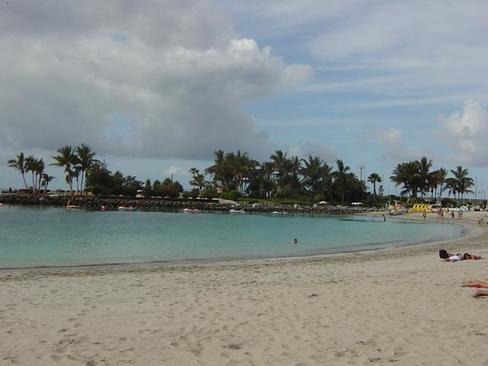 First was Gran Canaria. Our resort had good sand, imported all the way from Caribbean islands; local sand is mostly dark and not good for a beach. 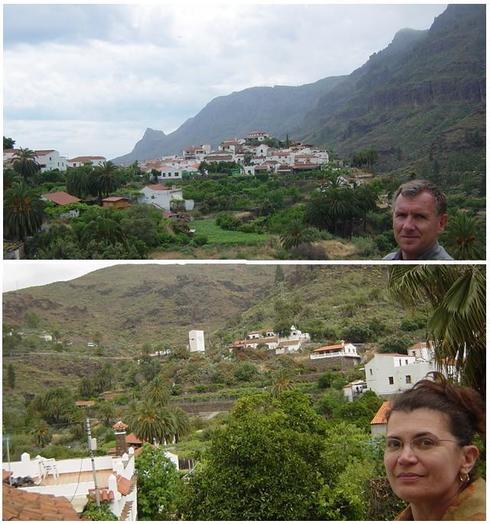 One day we rented a car and visited the village of Fataga, the place has a historical resonance; many of the final battles between the local population, the Guanches, and the Spaniards, in the 16th century, took place around this village. 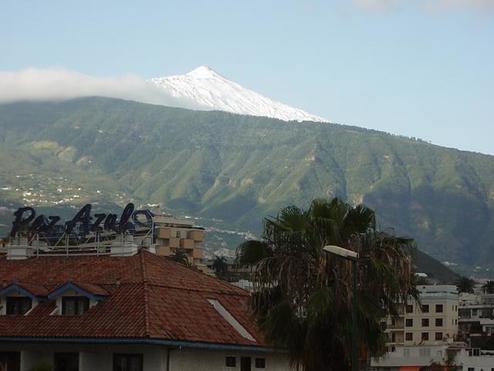 Next island was Tenerife, that is dominated by Mount Teide, right in the middle of it, 3,718-metre (12,198 ft), the summit is the highest point in Spain and the highest point above sea level for all the islands of the Atlantic. The resort where we spent few days was decent, clean, had reasonable good food; many evenings a live band was playing; there was room for dancing too, and we enjoyed it. The resort was in Santa Cruz de Tenerife, and the city itself has restaurants where tourists can enjoy good food, music and dancing. 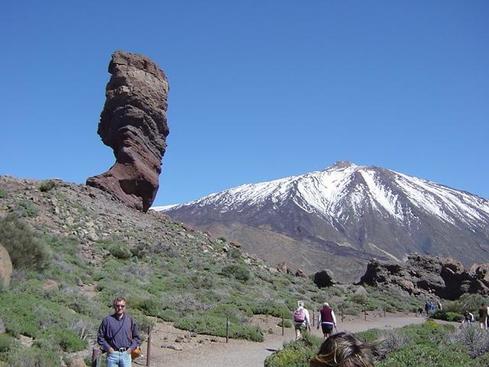 The north of the island is mostly cloudy because the clouds coming from the north cannot pass over the mountain. But there are regular busses going up on the Teide plateau, at about 2000-metre (6561 ft), where the sky clears and generally is good weather. The scenery is very unique, signs of volcano activity is impressing (last volcano eruption in 1908). 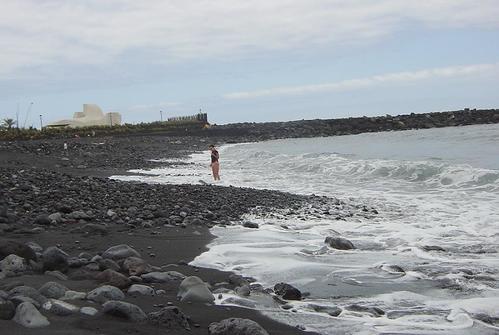 The beaches in town have black sand, it is volcano ashes, and when there is sun you cannot stay on it, it is burning, you need to wear shoes. From Wikipedia, https://en.wikipedia.org/wiki/Thousand_Islands “The Thousand Islands constitute an archipelago of 1,864 islands[1] that straddles the Canada–US border in the Saint Lawrence River as it emerges from the northeast corner of Lake Ontario. They stretch for about 50 miles (80 km) downstream from Kingston, Ontario. The Canadian islands are in the province of Ontario and the U.S. islands in the state of New York. The islands range in size from over 40 square miles (100 km2) to smaller islands occupied by a single residence, or uninhabited outcroppings of rocks. To count as one of the Thousand Islands, emergent land within the river channel must have at least one square foot (0.093 m2) of land above water level year-round, and support at least two living trees.[2][3]“ Before taking the boat, on Canada soil. That small bridge is Canada-US border, the island on the left is Canada, the one on the right is US.
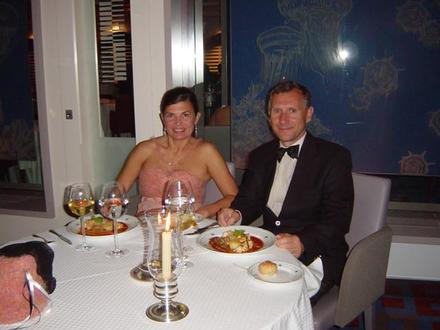 We ware very lucky with the weather, early September 2004, a week of sunny days. The cruise started in Vancouver for the two of us, me and my wife. We visited three cities in Alaska: Juneau, Ketchikan and Sitka and stooped for few hours at Hubbard glacier. 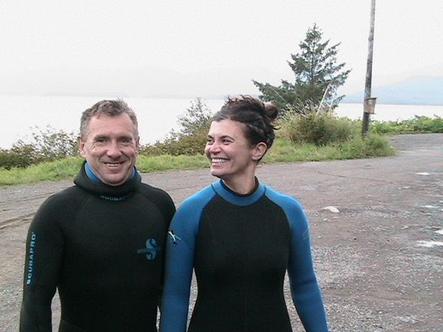 In Ketchikan we did snorkeling, yes, snorkeling in Alaska. The water was 16 Celsius (about 60 F), but our guides provided sponge costumes and hang some weights on us, enough to keep us few inches under the water, but still floating, the snorkelling pipe above the waterline. The idea was that after 2-3 minutes, if the body is submerged all times, the water in the costume will raise to body temperature and stay that way as long as the body does not float above sea level. 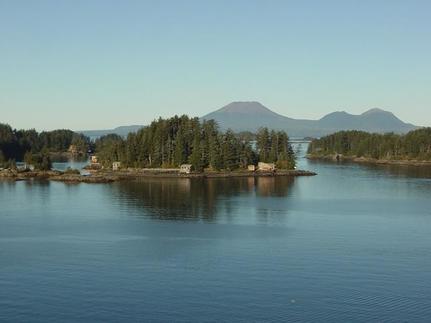 Sitka was beautiful, clean. The ocean with small islands around the city was breathtaking. A touristic city where modern small shops and history combined beautifully. In the afternoon we saw a show, a group of ladies, performing Russian and local dance, very dynamic and nice choreography. 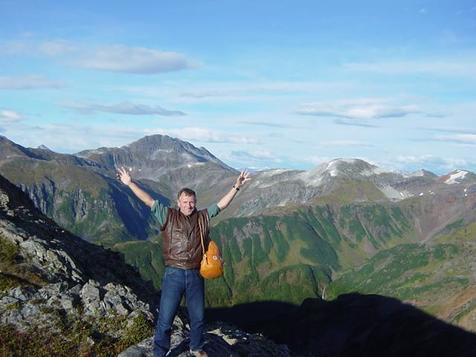 Juneau offered a selection of choices: fly with an airplane among mountains, land on a glacier with a helicopter, or race with inflatable boats down a river. We decided for the race in the morning, the river was actually a melting glacier. In the afternoon we climbed all the way to the top of mount Roberts. And here is a little story. On our way down, before reaching Juneau, we saw a tiny church on a hill. We entered. The priest was inside, a short and very welcoming aboriginal guy, all smiles. Our Romanian accent drew his attention. “What accent is that?” What revelation waits for me now? I thought. Many times in our trips when we spoke our first language there were surprises. “Romanian.” Always smiling, the priest pointed to a small painting on the wall. “Check that one.” I approached and saw a picture of a beautiful crafted church with twisted towers that seemed familiar. “Seems familiar.” “Well,” said the priest, “turn it and read on the back.” On the back of the picture was written in Romanian, With love, Maria from Targoviste. And I remembered, it was a picture of one of the most famous church in Romania, Curtea de Arges. I was impressed, but my first reaction was to ask about Maria. “Where is Maria?” The priest was amused of my surprise. “I’ll show you.” And he made me a sign to join him at a window on the east side. Both me and my wife approached. “You see,“ said the priest pointing a house on the opposite hill, “that red house is Maria’s house.” “What is she doing in Juneau?” The priest expected the question since he answered before I finished the question. “English teacher.” All right. Our trip in Alaska was a wonder, and I encourage my readers to take it. Beautiful.
|
|
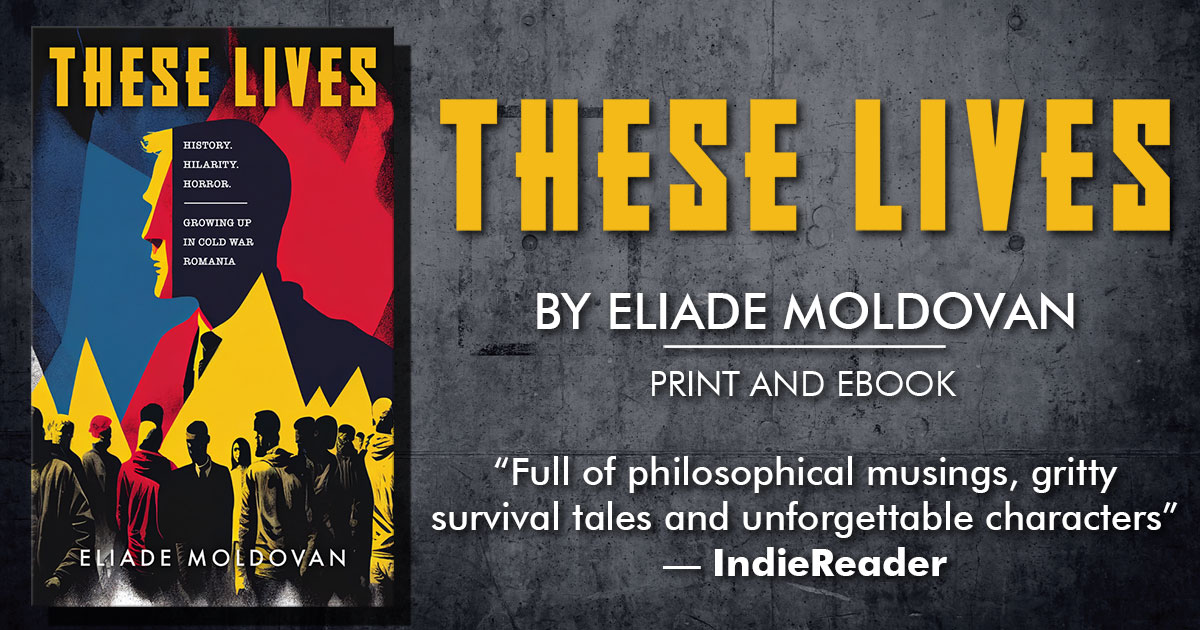



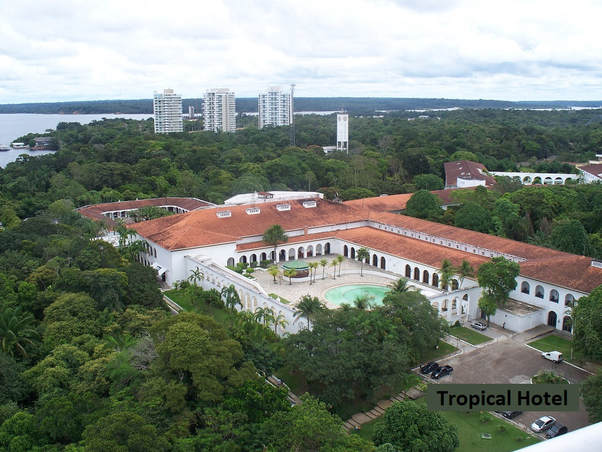
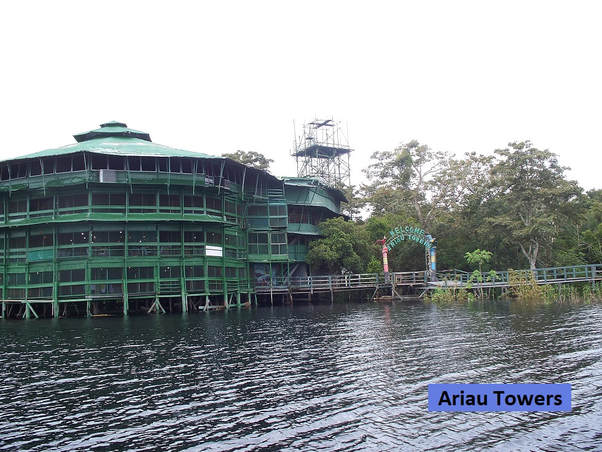
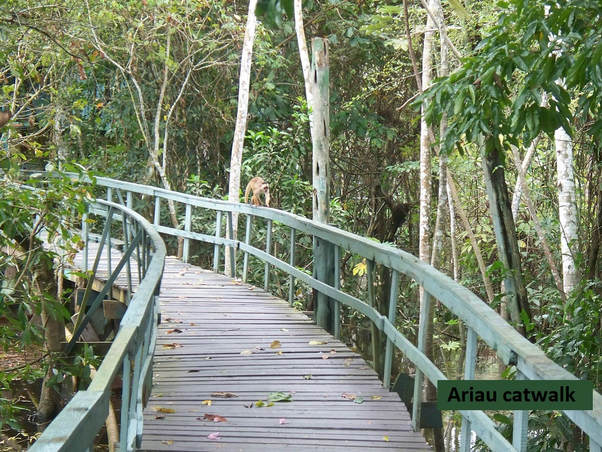
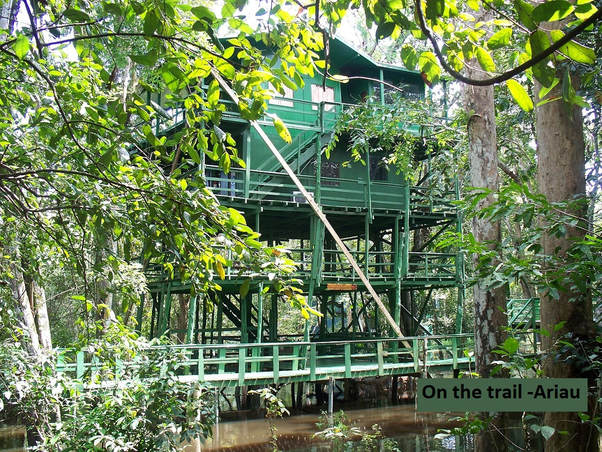
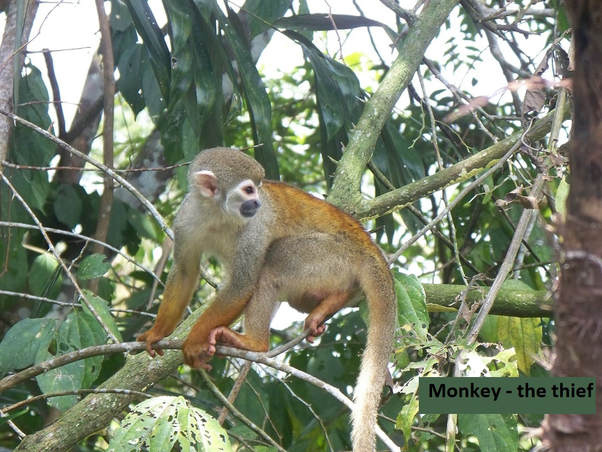
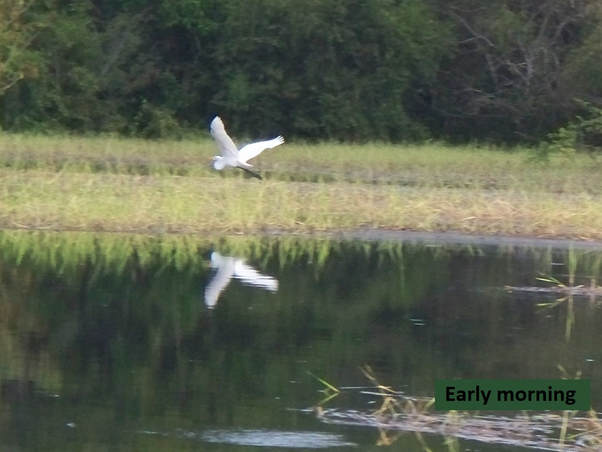
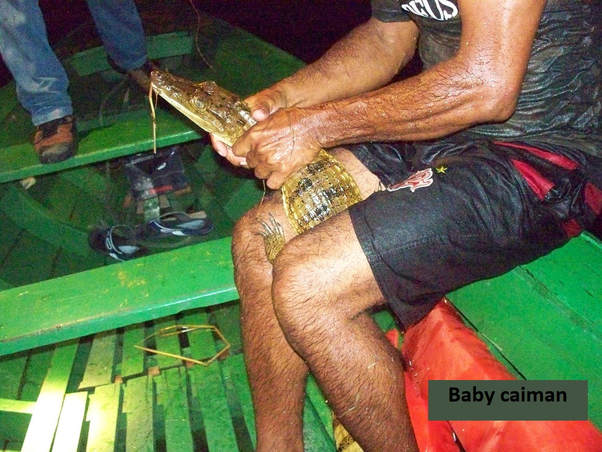
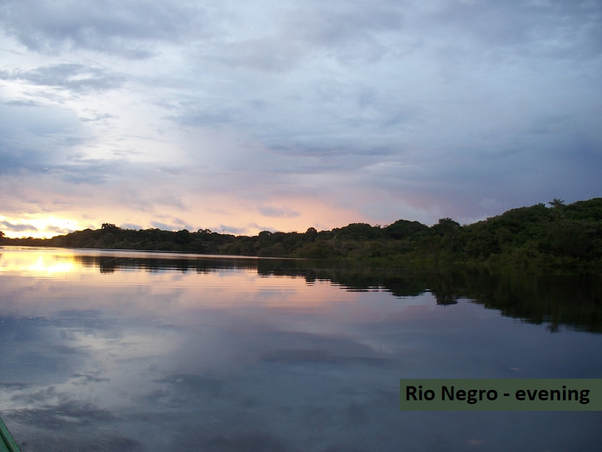
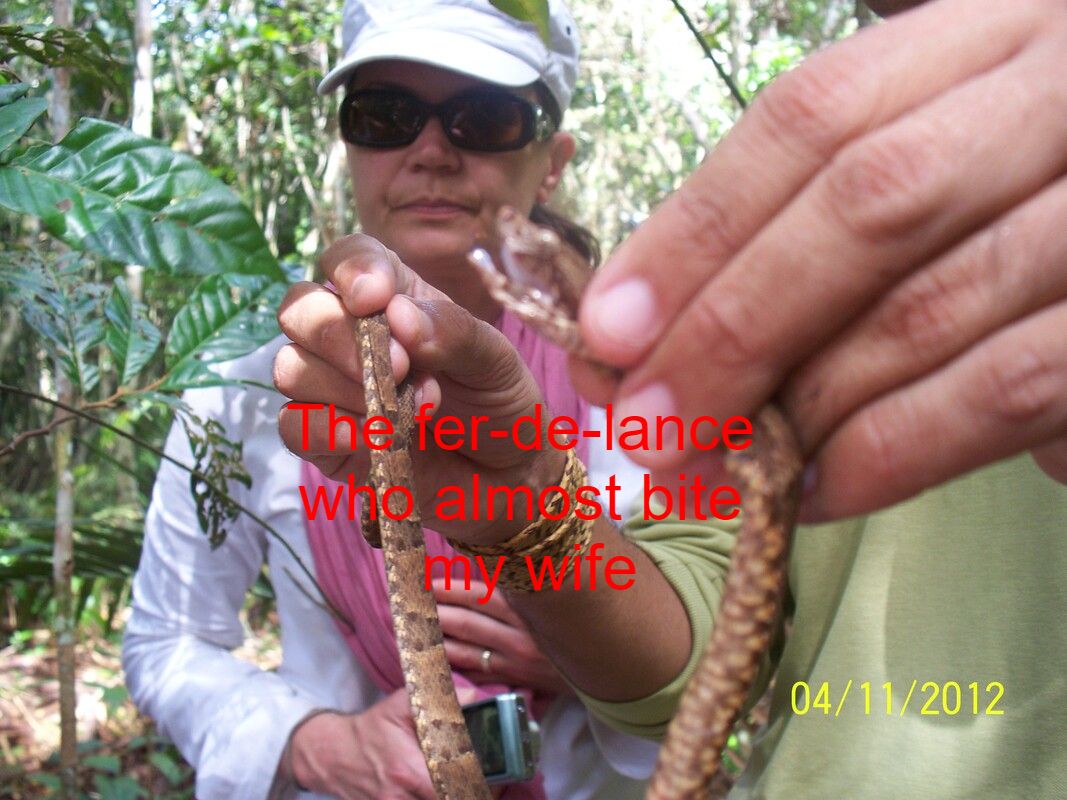
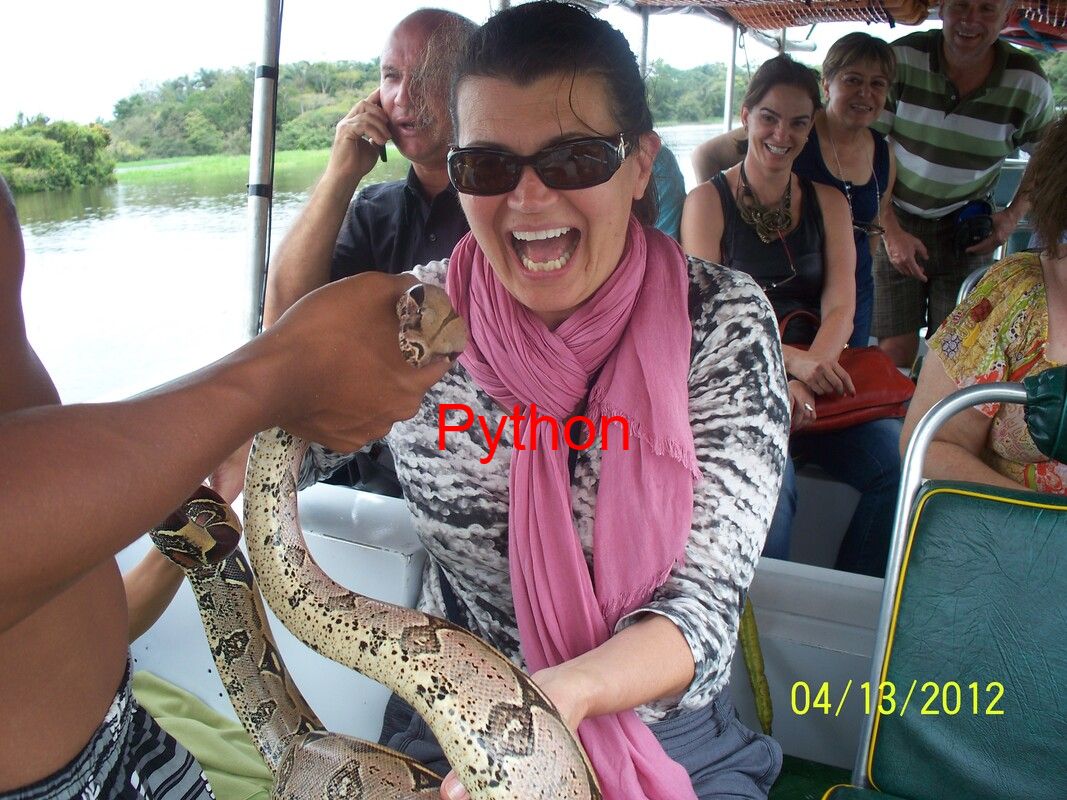
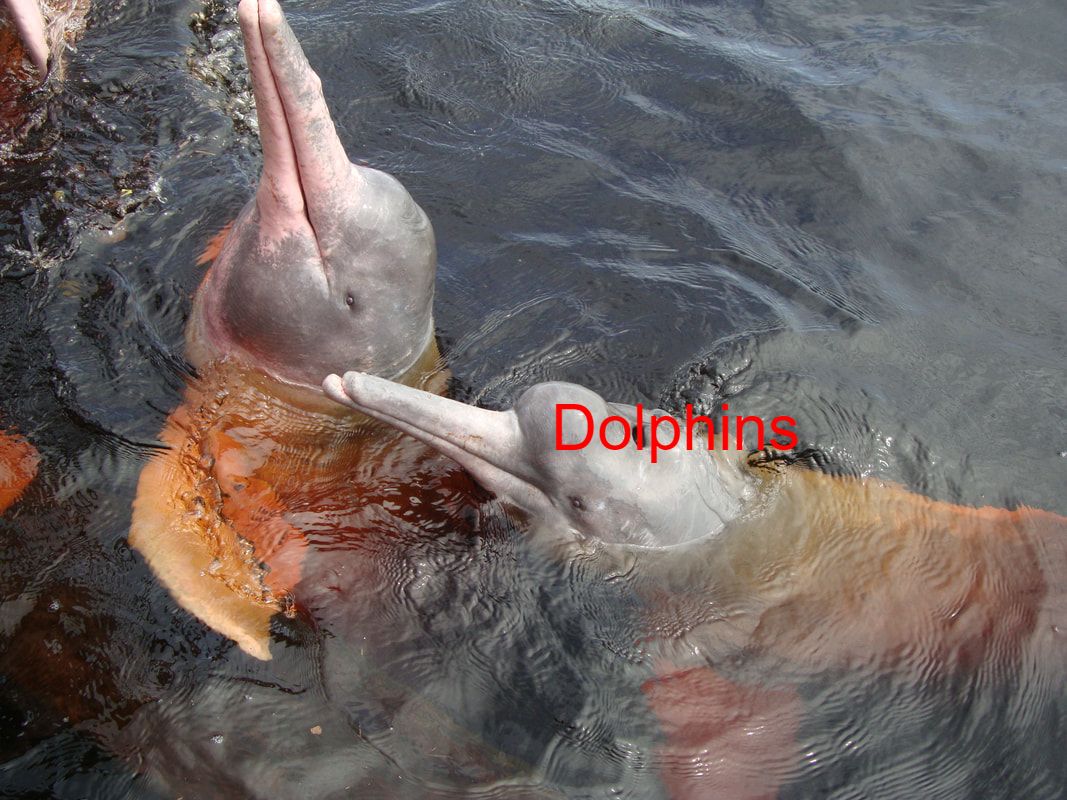
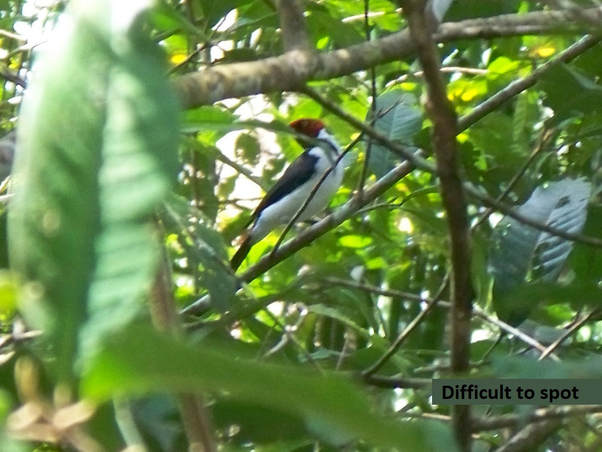
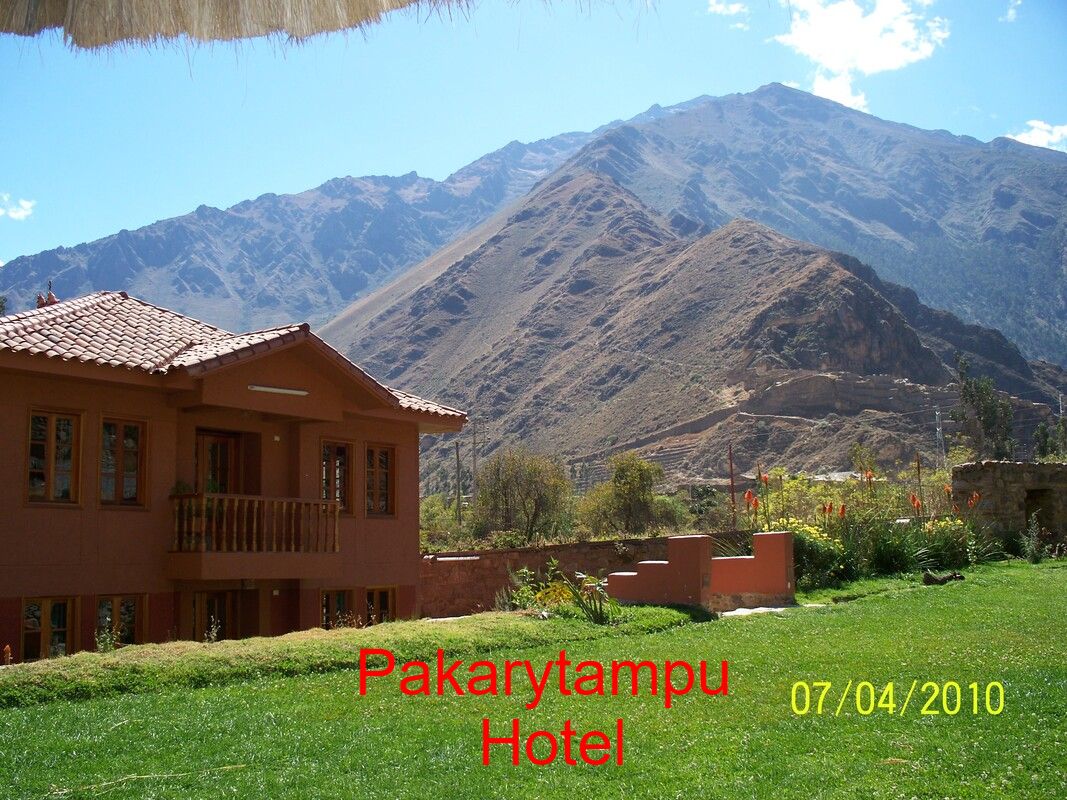
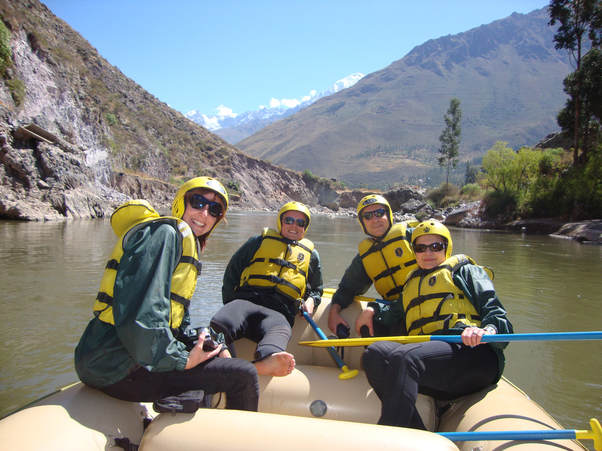
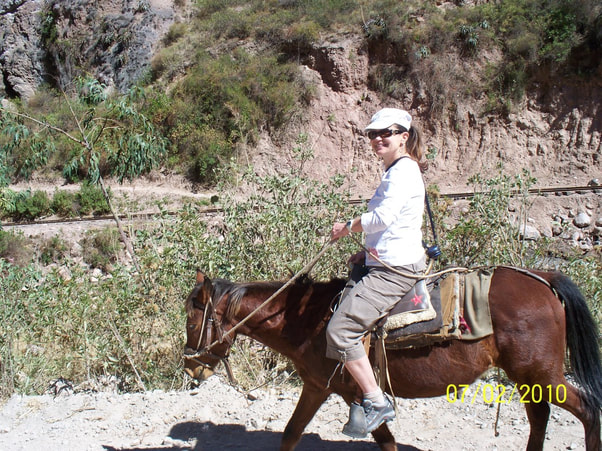
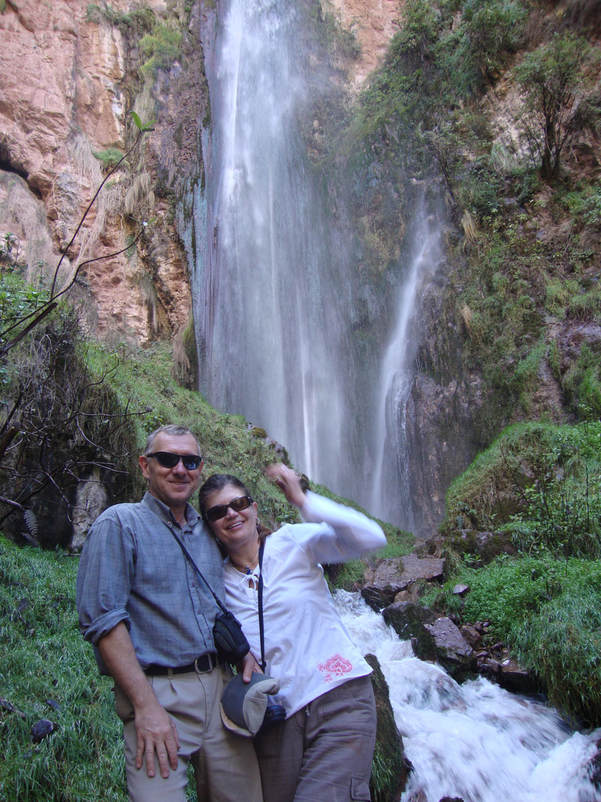
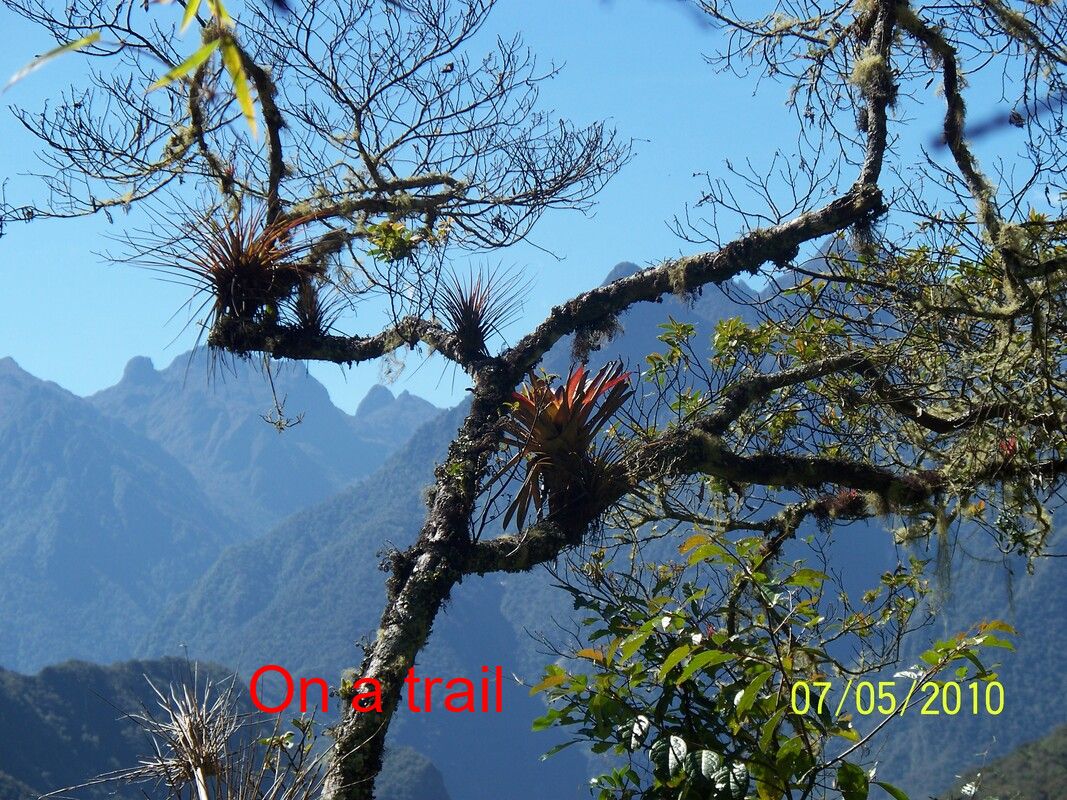
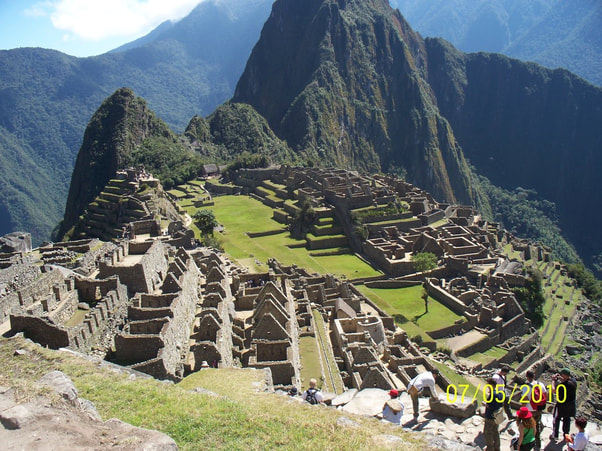
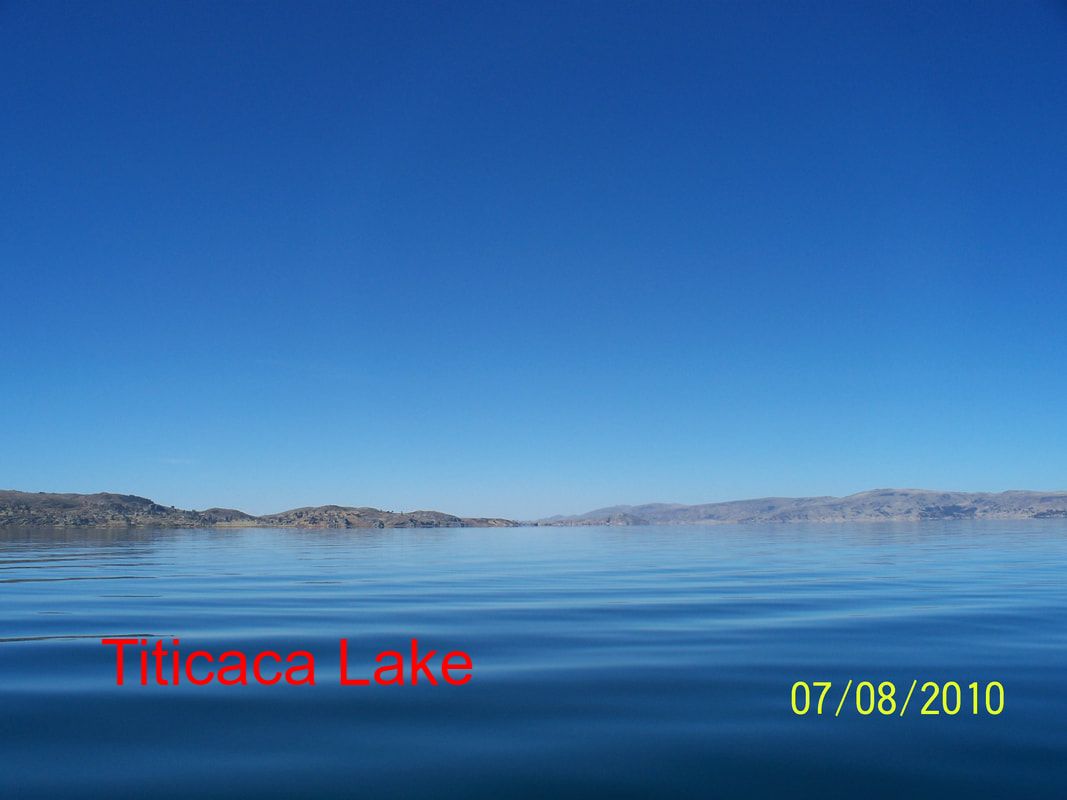
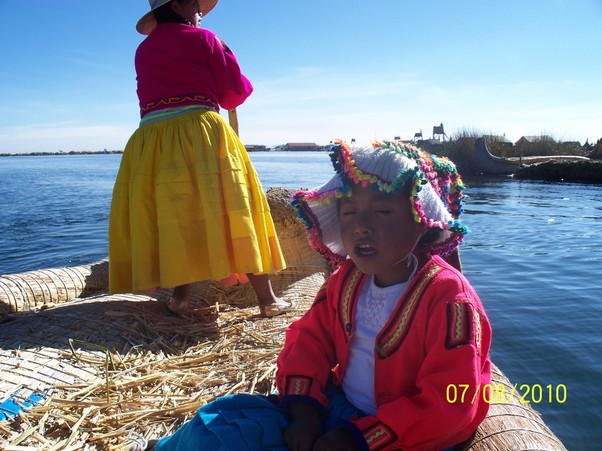
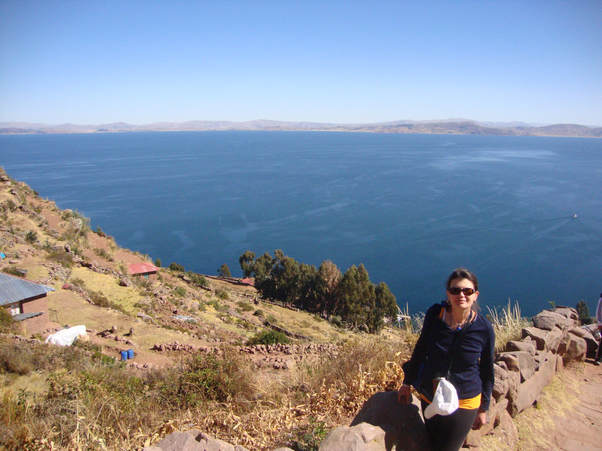
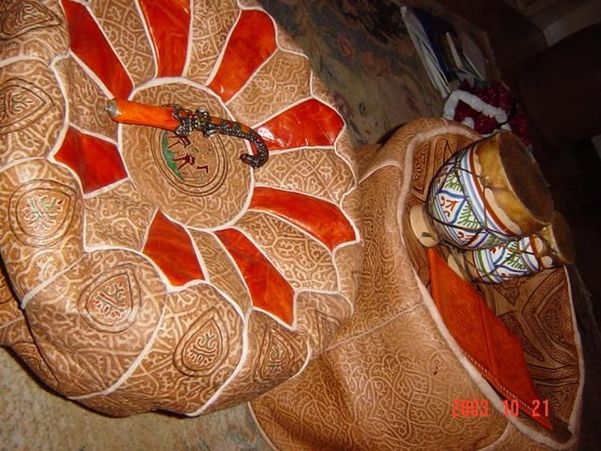
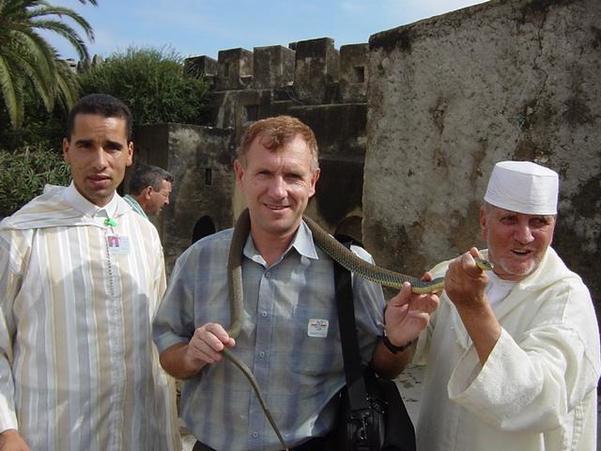
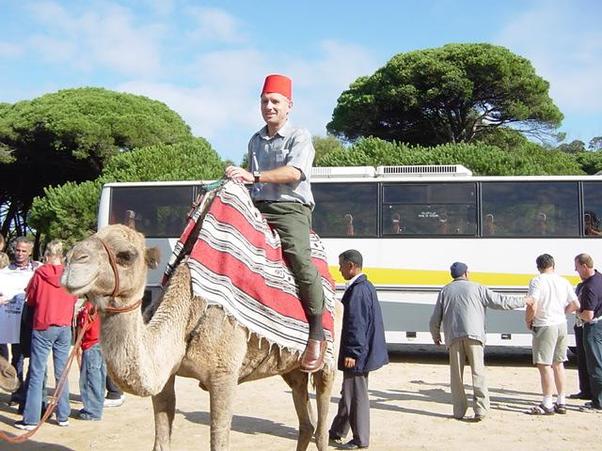
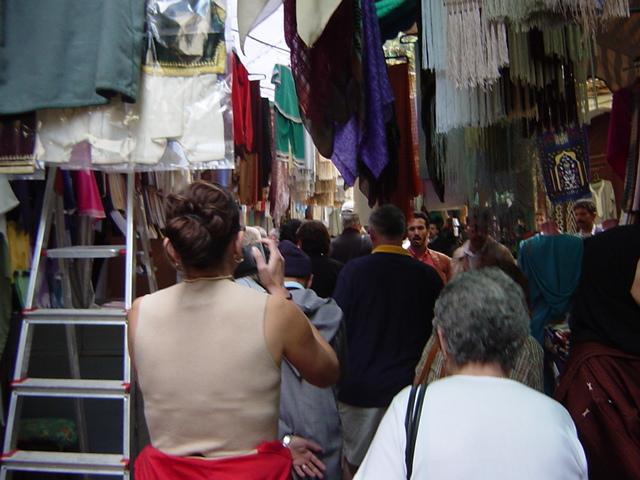
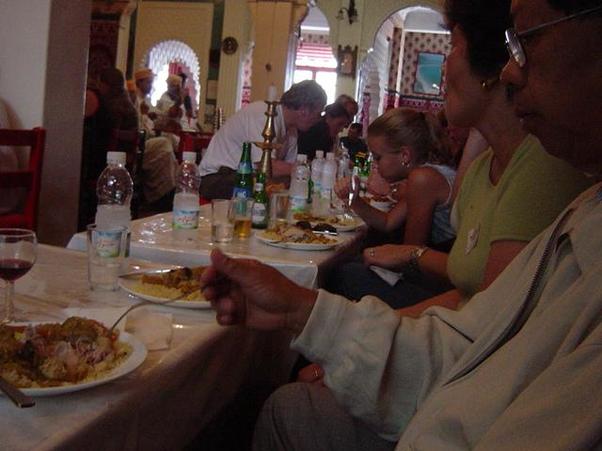
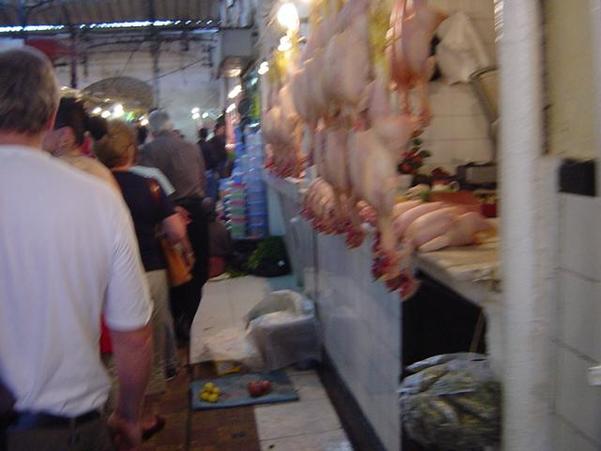
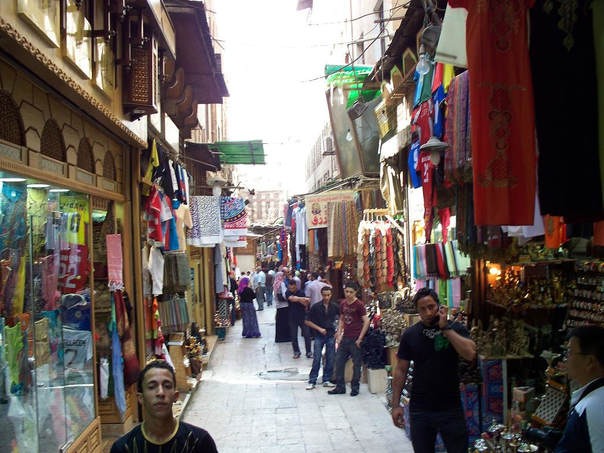
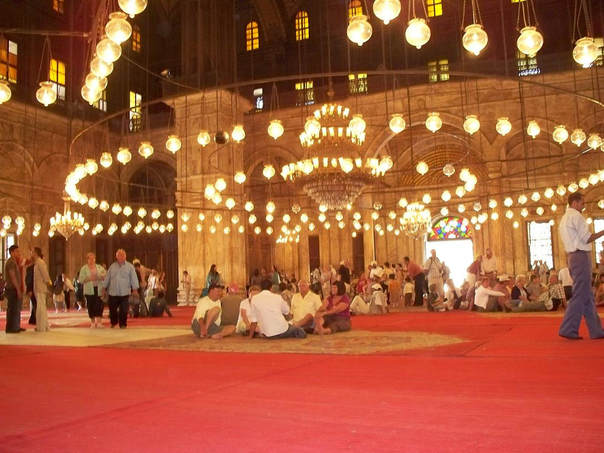
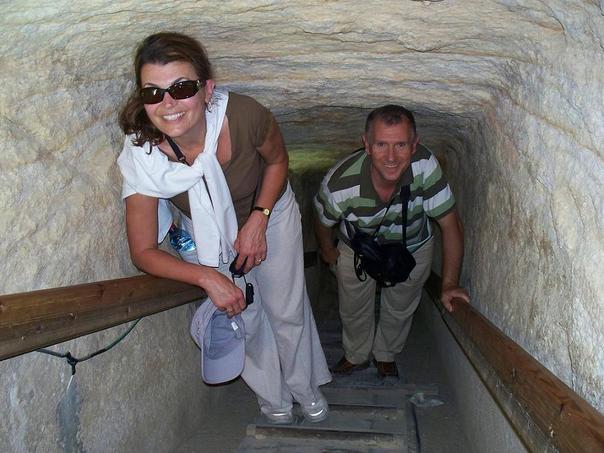
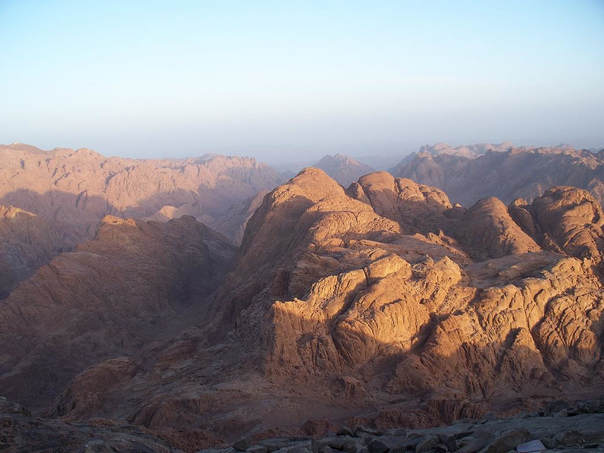
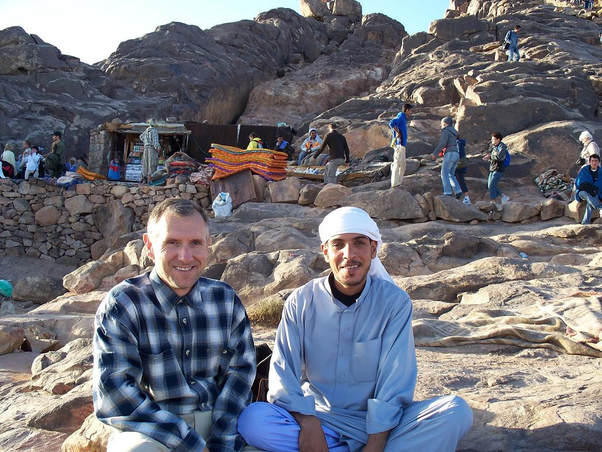
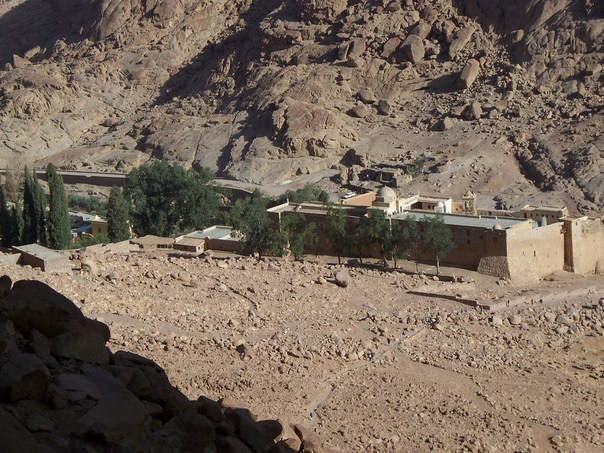
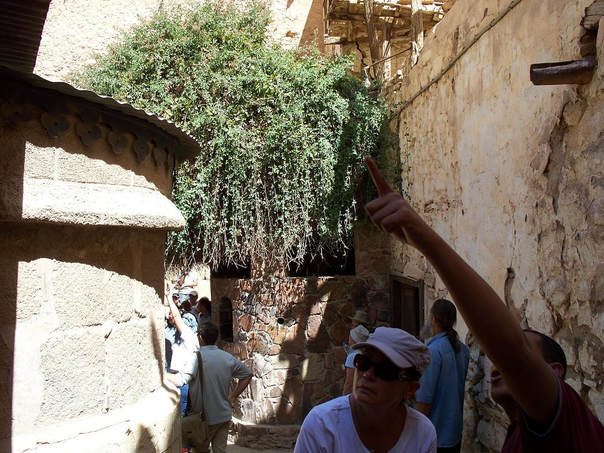
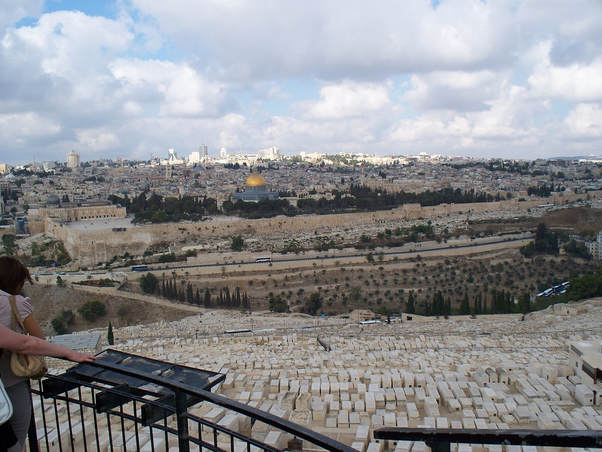
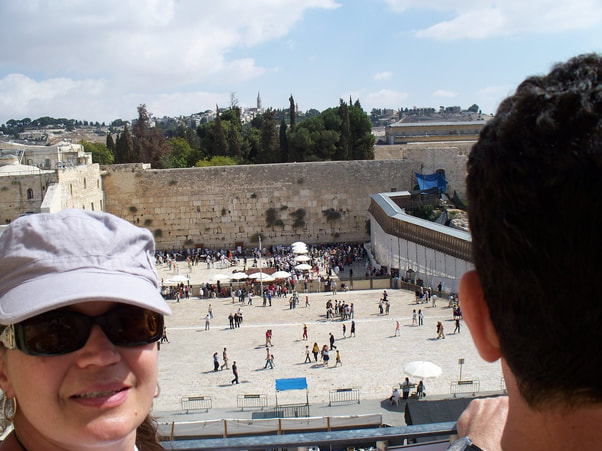
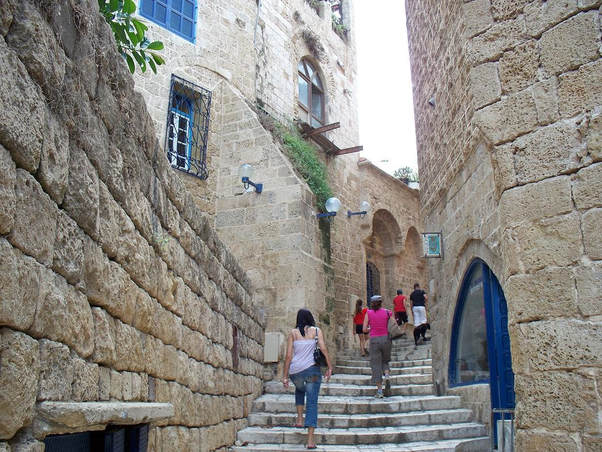
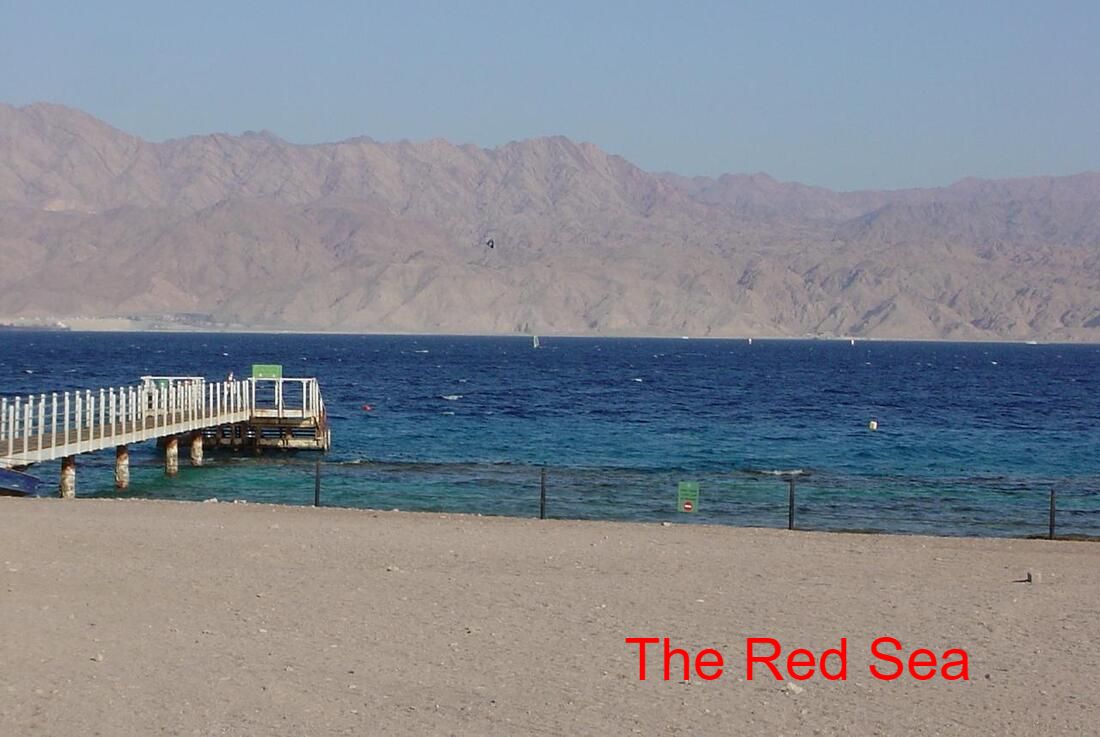

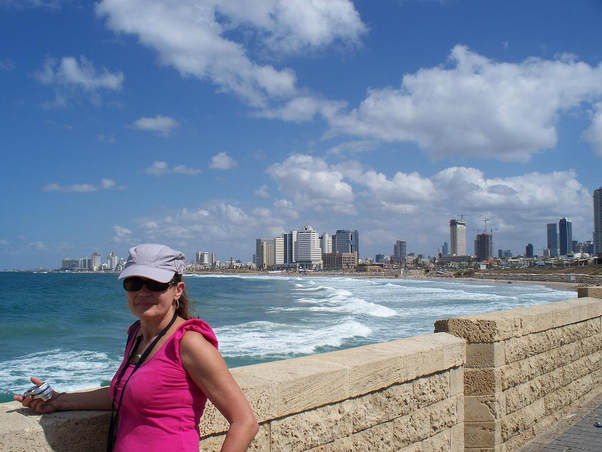
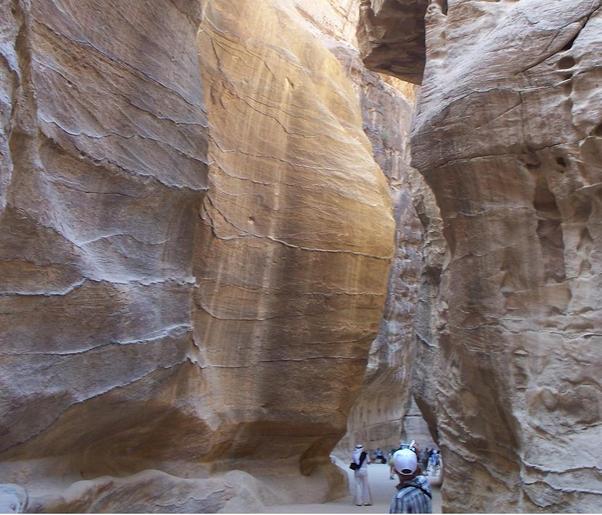
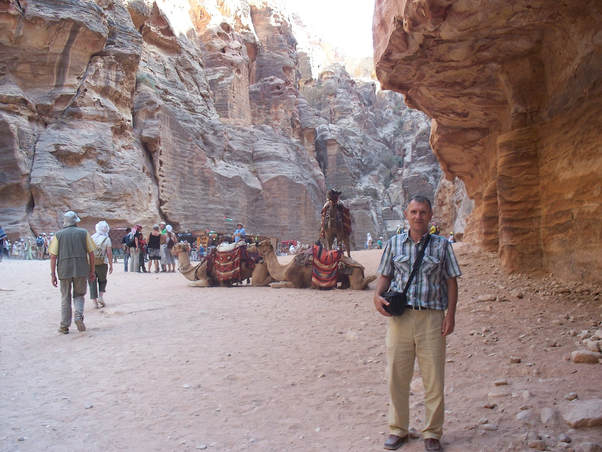
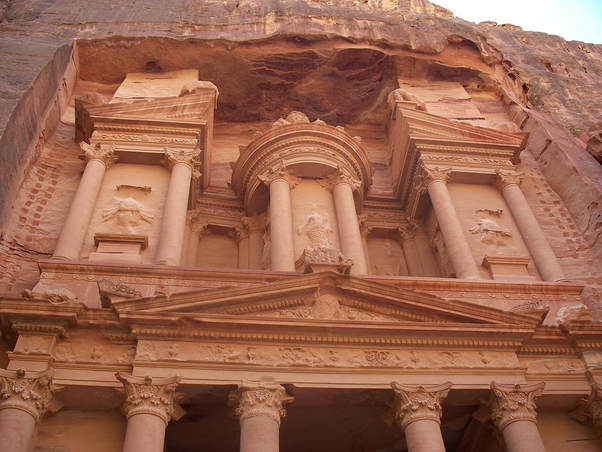
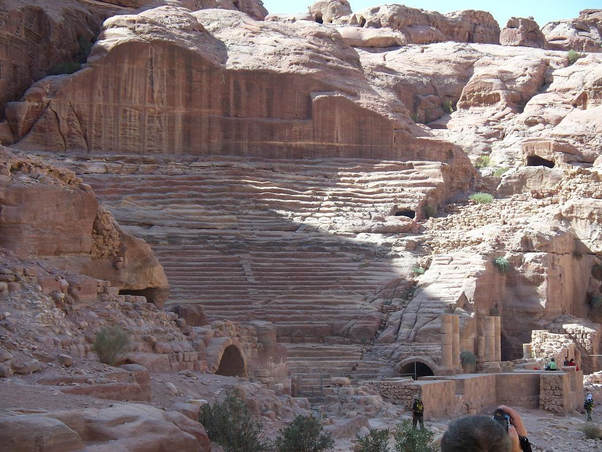
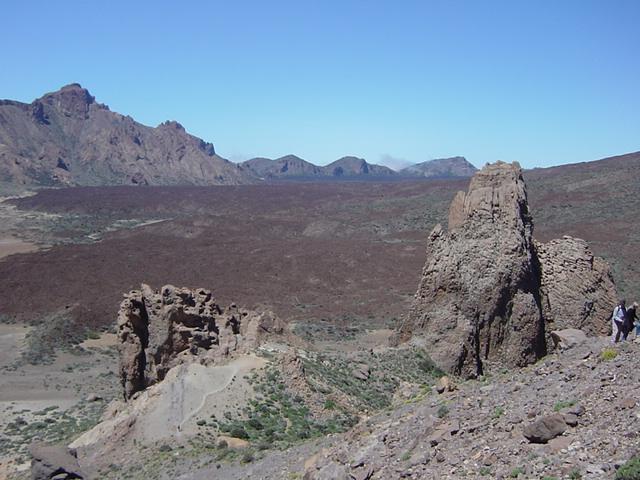
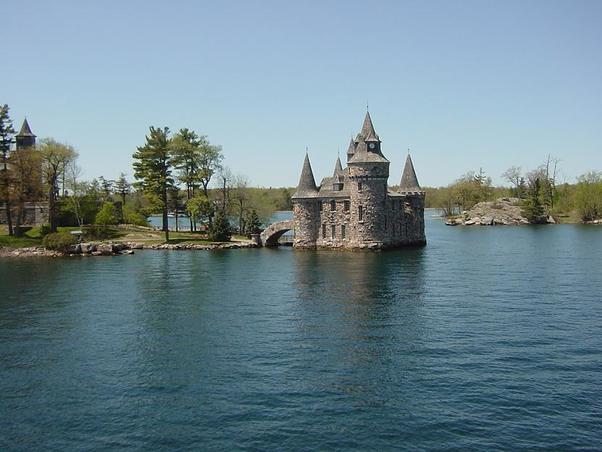
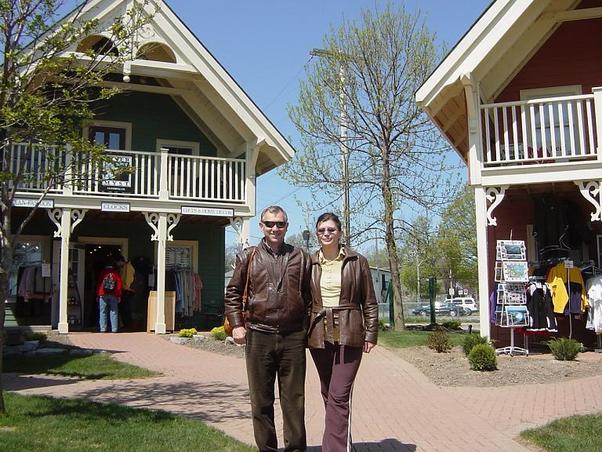
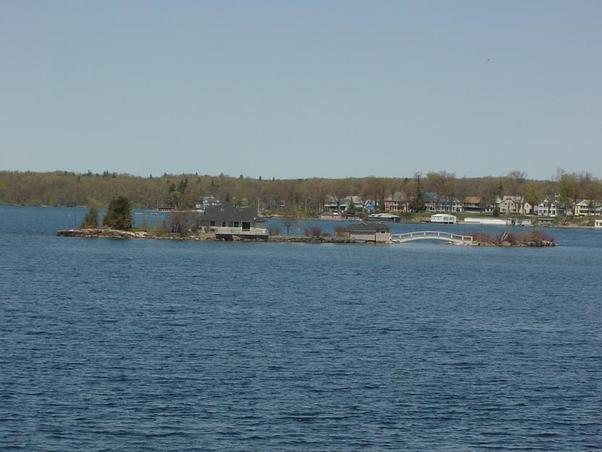
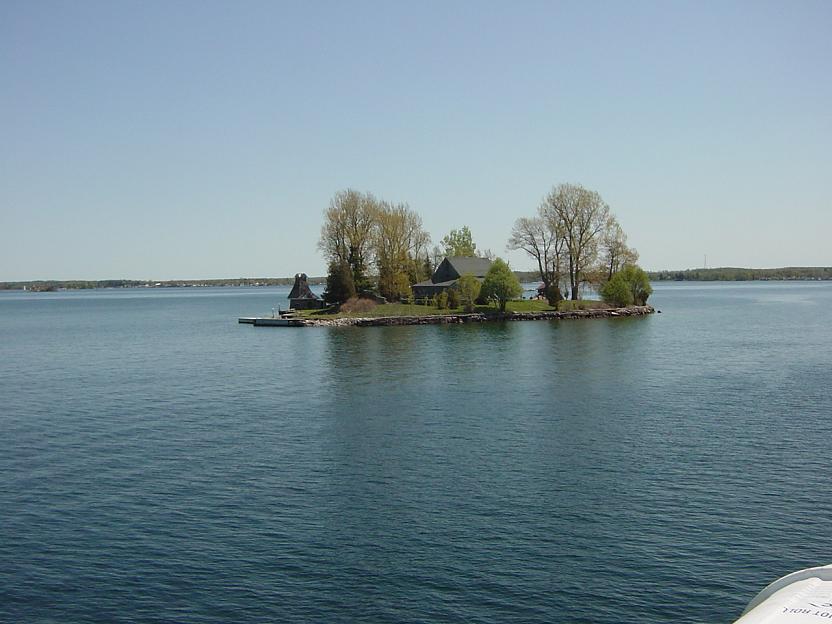
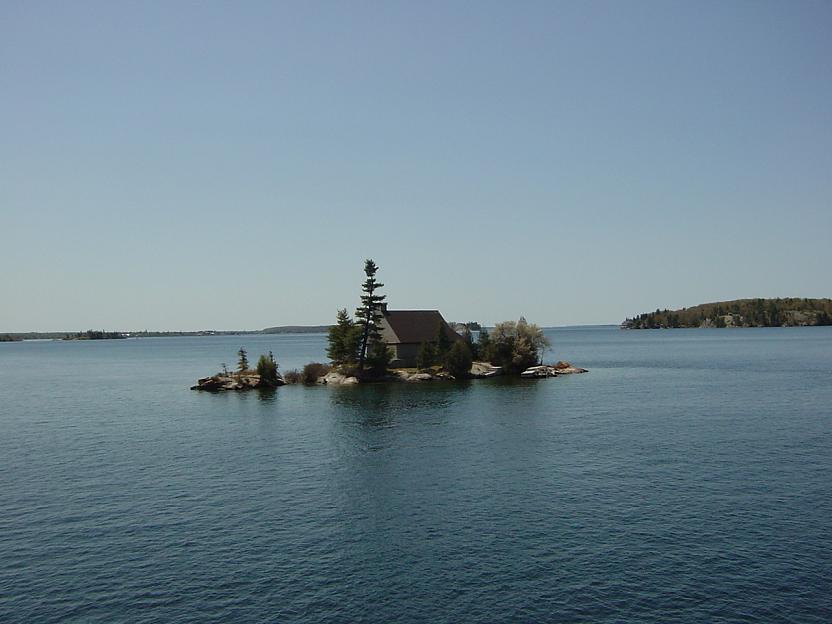
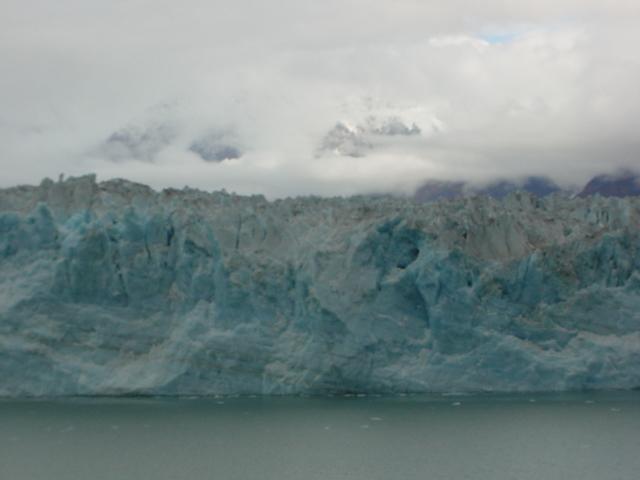
 RSS Feed
RSS Feed
